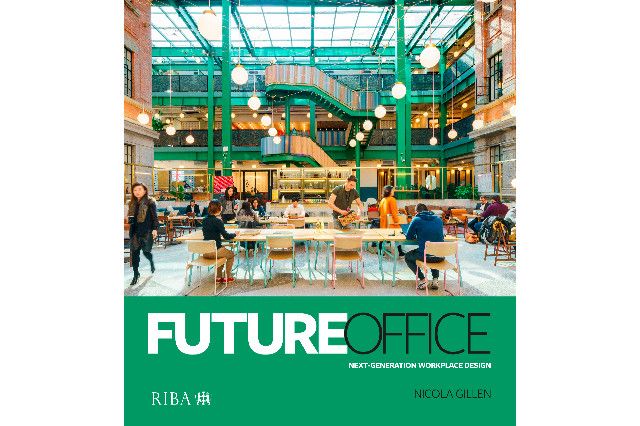
www.buildingsandcities.org/insights/reviews/future-office-review.html
Future Office: Next-generation Workplace Design

By Nicola Gillen. RIBA Publishing, 2019, ISBN: 9781859468456
Andrea Ciaramella (Polytechnic of Milan) reviews this book on the drivers that are changing the workplace and what this means for their design and management.
Workspaces are arguably the places most affected by the influences of social, economic and technological transformations in the design and management of a constructed environment. The planning, designing and managing of the work space requires a multidisciplinary approach and a holistic vision. The workspace is a complex system, which works only if all its parts are designed and studied with the same level of detail, a world in which the ability to read and interpret what happens is crucial to support future choices. This systemic vision emerges with great clarity in this book edited by Nicola Gillen
Future Office observes the world of the workplace from 1800 to 2018, and identifies the factors that will probably characterise the world of work in the next 100 years. It describes what actually happens in offices, while also updating the reader on technologies and the growing need to adapt to change. This book stimulates reflection on psychology, behavioural aspects, sustainability, the vast world of services to people amongst other factors. This book is not only for architects, but is a valuable resource for all those who deal with workspaces: human resources managers, corporate property managers, or CEOs of companies who want to deepen the relationship between economic activities and the space hosting such activities.
Buildings are discussed, but above all, the focus is on their ability to support activities with tools, technologies and performance. Particular attention is given to layout aspects that favour collaboration and interaction between individuals in the same environment. In the knowledge society, the activities with the greatest added value are increasingly freed from a physical place and generated by collaboration and cooperation, making consideration of workplace layout a necessity.
The book contains many potent ideas for designers and planners, including case studies that are very useful examples for representing solutions, organisational models and design approaches. Each case is the result of a system of different needs: the transformation of industrial spaces into offices (the case of Derwent London or Factory Berlin); the implementation of principles able to communicate the mood of the company (the Park 2020 circular economy principles), up to experiences that characterise public administration (the Government Hubs Program in Croydon, UK).
The book illustrates current trends very effectively. It envisages future scenarios (increasing digitisation, the development of new jobs that are not all predictable today; the development of plug and play solutions also in the space fit out; robots and interaction with humans; the changing role for architects and designers for whom capacity is needed both to enrich their professional approach as well as revise their own training) and illustrates what this means for the transposition of design. The tools that the authors provide are typical of a holistic approach, aimed at considering the work, projects and solutions. These are considered within the organisational context of company constraints and targets: the control and reduction of costs, the ability to promote productivity, ensuring the welfare of people, the ability to encourage teamwork, emerging technologies, the growing need for flexibility and resilience, as well as many other aspects.
From my perspective, the most important contributions that Future Office offers are the creation of tools to understand changes including the advent of new cultural expectations and norms due to the growth of the sharing economy; the impact of technologies on society and the economy; the social changes that bring about new trends in consumption; and the circular economy as drivers for many economic activities. This book illustrates pathways that we can use to address these changes.
Nicola Gillen also offers readers some ideas and insights for the future of work and the workplace. The number of people with a structured job is likely to decrease, due to a significant increase in freelance work, occasional employees and consultants. Therefore, a consequent reduction in the occupied space will occur, but the workspace will need to provide a substantial increase in quality and technology.
The subject of this book is office environment models and solutions, but these are subordinated to the role of people who are increasingly an essential point of reference for design choices. The value of modern and future companies ultimately resides in the mind: the fostering and harnessing of the capabilities, know-how and creativity of individuals and their networks.